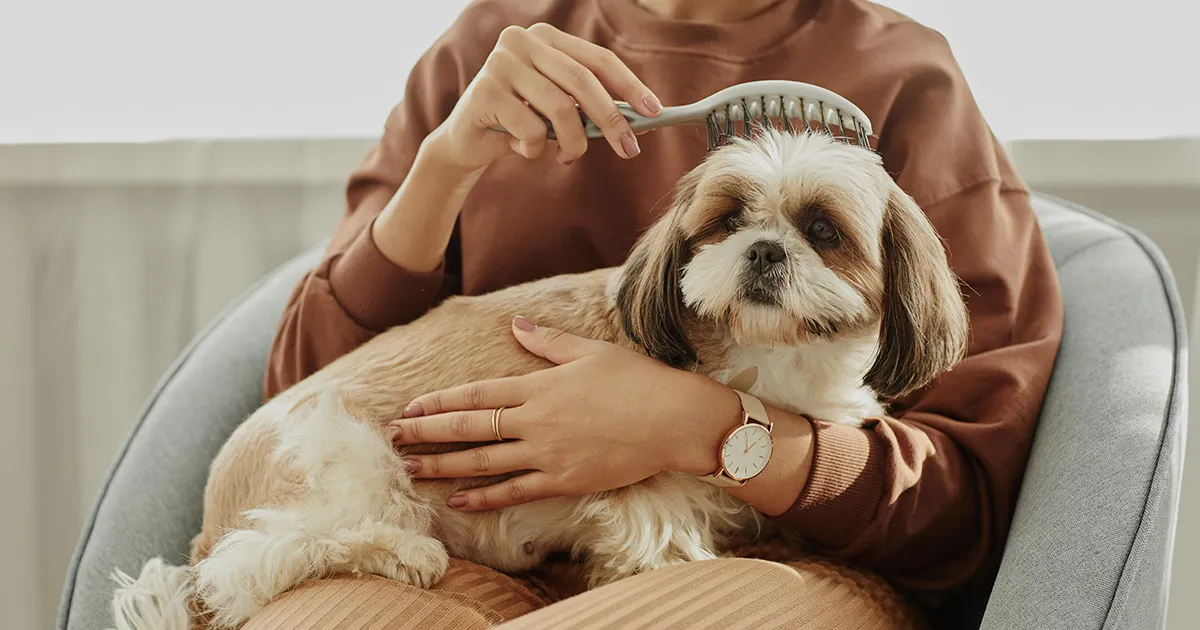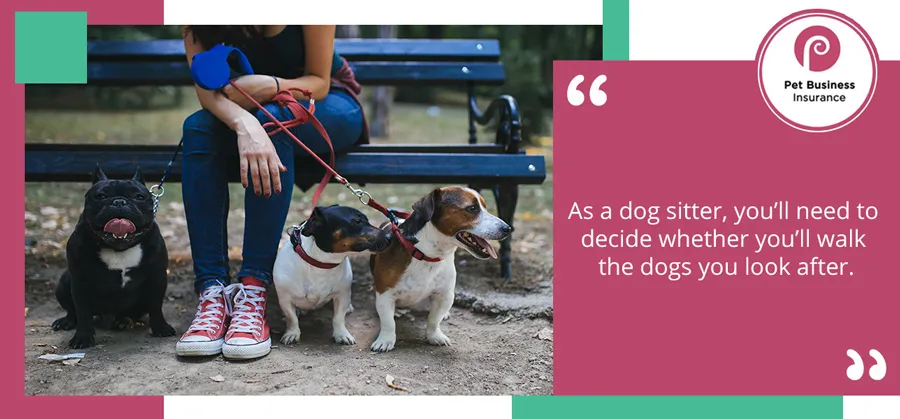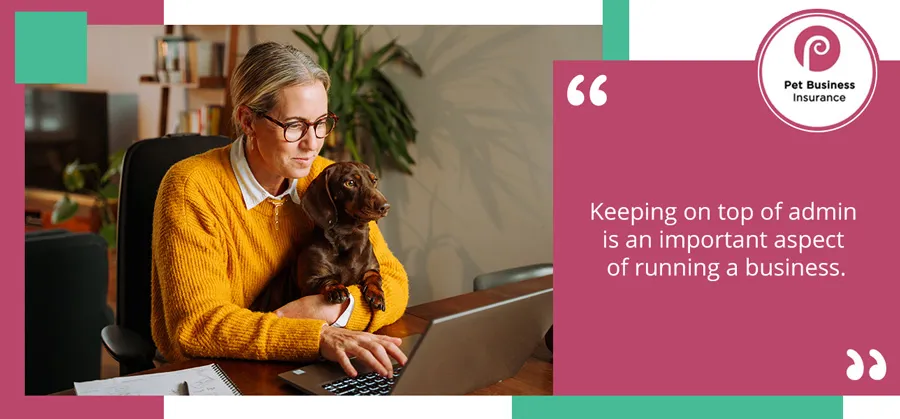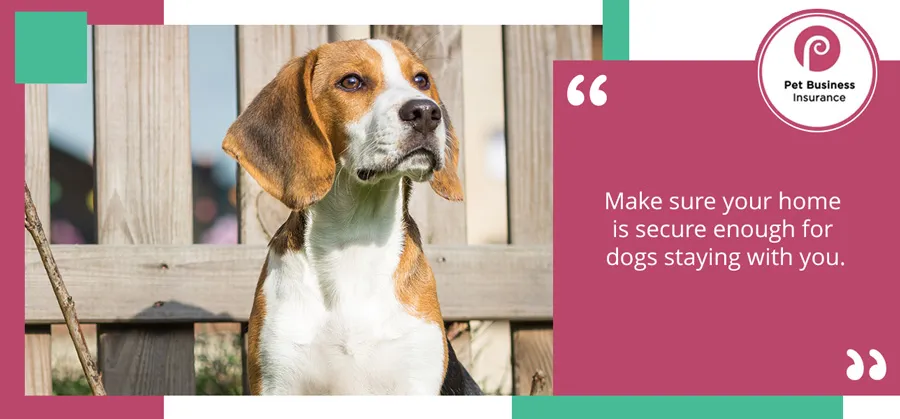Are you passionate about dogs and looking for a rewarding career that allows you to spend your days with man’s best friend? Becoming a dog sitter in the UK can be an incredibly fulfilling way to earn an income. This guide will walk you through the essential steps and considerations to help you establish a successful dog sitting business.
Becoming a dog sitter offers the unique opportunity to combine your love for animals with a flexible and potentially lucrative career. However, like any business venture, it requires careful planning and an understanding of the legal, practical, and professional aspects involved. From deciding on the services you’ll offer to navigating licensing requirements and marketing your business, this comprehensive guide will equip you with the knowledge needed to excel.
Defining Your Dog Sitting Services
Before you embark on your journey to become a dog sitter, it’s crucial to define the scope of services you intend to provide. This clarity is not only essential for your own business planning but also has legal implications in the UK. Consider the following key questions:
- Location of Service: Will you offer dog sitting at your own home, or exclusively at the client’s residence?
- Duration of Care: Will you provide overnight boarding, or focus solely on daytime companionship and care?
- Additional Services: Beyond basic companionship, will you offer dog walking, or other specific care needs?
- Capacity: What is the maximum number of dogs you are willing and able to care for simultaneously?
Understanding these aspects will help you tailor your business model and ensure compliance with any relevant regulations. For those interested in the varied roles dogs play, exploring fiction books about search and rescue dogs might offer inspiration.
 Young woman brushing a small dog on her lap
Young woman brushing a small dog on her lap
Understanding Legal Requirements for Dog Sitters in the UK
Navigating the legal landscape is a vital step in establishing your dog sitting business. The requirements can vary depending on the specific services you offer.
If you plan to offer dog sitting services in your own home, whether for overnight stays or day care, you will need to obtain a licence from your local authority. This licensing requirement also extends to those who operate kennels from their homes, necessitating compliance with specific dog kennel boarding licensing guidance. Similarly, if you intend to provide dog day care services at a commercial business premises, a licence from your local authority is mandatory.
Conversely, if your dog sitting services are solely provided at the client’s home, a licence is generally not required. However, clients may request a criminal record check (DBS check) before entrusting you with the keys to their property. To formalise your service agreement and protect both yourself and your clients, it is highly recommended to present a comprehensive dog sitting contract. This document should clearly outline the terms and conditions under which you will operate.
Qualifications and Experience for Dog Sitters
While there are no mandatory formal qualifications to become a dog sitter in the UK, practical experience is invaluable. Prospective clients will want assurance that you are capable of handling and caring for their beloved pets. Demonstrating a solid understanding of dog behaviour, handling techniques, and basic canine first aid is highly beneficial.
Consider gaining experience through volunteering at animal shelters or assisting experienced dog walkers. Some dog sitters also find it advantageous to have basic pet medical knowledge or certifications. Joining a professional organisation, such as the National Association of Pet Sitters and Dog Walkers (NarpsUK), can significantly enhance your credibility. These associations often provide valuable resources, guidelines, and a code of conduct that clients can rely on.
 Young woman sat on a park bench with three dogs on leads
Young woman sat on a park bench with three dogs on leads
The Role of Veterinary Care
A crucial aspect of dog sitting is understanding how to handle potential medical needs. You will need to obtain the contact details of the client’s registered veterinarian. It is also advisable to inform the vet that you will be pet sitting for their client. Always inquire about any pre-existing medical conditions the dog may have, including allergies or ongoing treatments, and ensure you understand the specific instructions for administering medication. Familiarise yourself with emergency procedures and know how to contact the vet in case of a medical emergency. This preparedness is essential for ensuring the well-being of the dog under your care. For those interested in the intricacies of canine roles, exploring fiction books about k9 dogs can be insightful.
Streamlining Your Business Administration
Effective administration is the backbone of any successful business, and dog sitting is no exception. Implementing a robust system for managing your administrative tasks is essential for smooth operations and client satisfaction. This includes:
- Invoicing: Creating and sending professional invoices to clients promptly.
- Client Records: Maintaining a detailed and organised database of all your clients and their pets, including contact information, pet details, and service history.
- Accounting: Keeping accurate financial records, including income and expenses, for tax purposes.
You are required to register with HMRC for tax purposes and decide whether to operate as a sole trader or a limited company. Furthermore, ensure you comply with data protection regulations, such as GDPR, regarding the storing and transfer of personal information.
 Professional dog sitter sat at a desk working at a laptop with a small dog on her lap
Professional dog sitter sat at a desk working at a laptop with a small dog on her lap
Marketing Your Dog Sitting Business
Once your essential business foundations are in place, it’s time to attract clients. Fortunately, there are numerous cost-effective ways to market your dog sitting services:
- Word-of-Mouth Referrals: Encourage satisfied clients to spread the word to their friends and family.
- Personal Network: Inform your own friends and acquaintances about your new venture.
- Business Cards: Design and distribute professional business cards at local pet-related events or businesses.
- Flyers and Posters: Display eye-catching flyers and posters in community centres, veterinary clinics, pet supply stores, and local parks.
- Social Media: Leverage platforms like Facebook, Instagram, and local community groups to showcase your services and engage with potential clients.
- Website: Consider creating a professional website to provide detailed information about your services, pricing, testimonials, and contact details.
These marketing strategies can be implemented without requiring a significant financial outlay. For those who appreciate the discipline and precision of working with canines, engaging with tactical dog training books can provide valuable insights into advanced handling techniques.
Preparing for Client Visits and Home Environment
When you agree to dog sit at a client’s home, it’s crucial to conduct an introductory visit beforehand. This allows you to meet the dog in their familiar environment, understand their routine, and assess the facilities available. It also provides an opportunity for the client to get to know you and feel comfortable leaving their pet in your care.
If you are dog sitting in your own home, ensuring your property is a safe, secure, and appropriate environment for dogs is paramount. This includes:
- Secure Garden: Ensure your garden is fully fenced and free from any potential escape routes.
- Hazard-Free Environment: Remove any dangerous objects, toxic plants, or choking hazards from areas accessible to dogs.
- Essential Supplies: Have a suitable selection of toys, leads, and food and water bowls readily available.
 Young beagle dog sat in a garden by a secure wooden fence
Young beagle dog sat in a garden by a secure wooden fence
The Importance of Dog Sitter Insurance
As a professional dog sitter, having appropriate business insurance is non-negotiable. It provides essential protection against unforeseen circumstances and liabilities. Your policy should, at a minimum, include:
- Public Liability Insurance: This covers you in case of injury to a third party or damage to their property while you are providing your services.
- Professional Indemnity Insurance: This protects you if a client claims you have provided negligent advice or services that resulted in financial loss for them.
You may also want to consider coverage for other typical risks faced by dog sitters, such as:
- Loss of a client’s house keys.
- Loss of your dog boarding licence.
- The unfortunate event of a dog in your care going missing.
Depending on the structure of your business, for example, if you employ any staff, you might also require employers’ liability insurance.
Choosing Reliable Insurance Providers
Selecting a reliable insurer for your dog sitting business is vital for your peace of mind and professional reputation. Pet Business Insurance has specialised in providing insurance for a wide range of small and medium-sized pet businesses, including dog sitters, for nearly two decades. They understand the unique risks involved and can help you find the right cover. To discuss your specific dog sitting business insurance needs, contact Pet Business Insurance today. You can reach them by calling 01284 736 874 or by completing their online enquiry form.
In conclusion, becoming a dog sitter in the UK is a viable and rewarding career path for dedicated animal lovers. By understanding and addressing the legal requirements, gaining relevant experience, managing your administration effectively, marketing your services, and securing appropriate insurance, you can build a trusted and successful dog sitting business.
